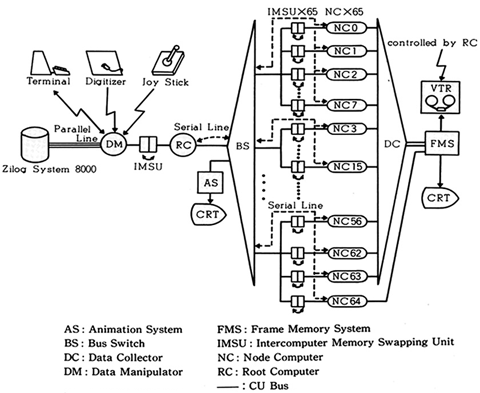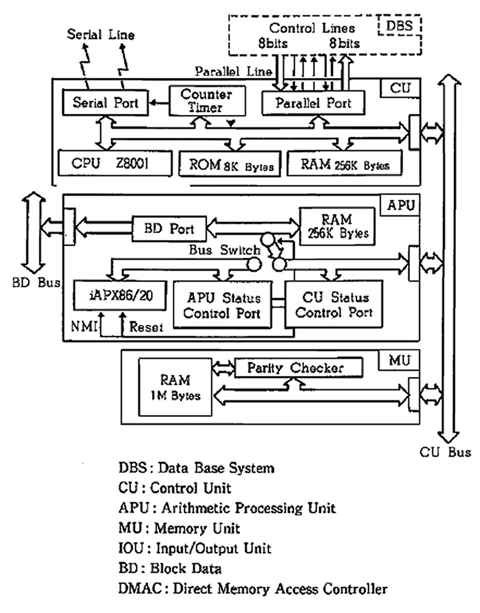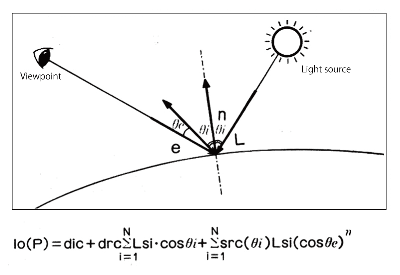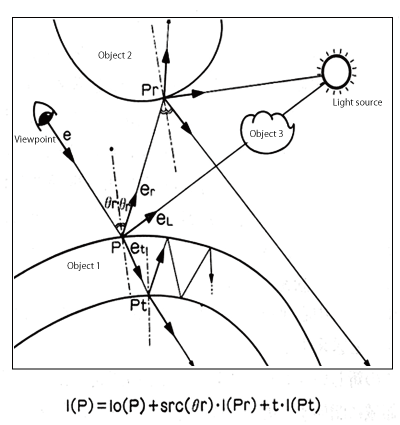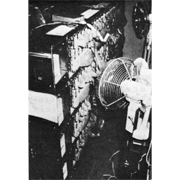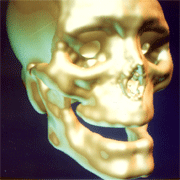LINKS-1 was a prototype multiple microcomputer system for computer graphics built by a group consisting of professors Ohmura Kouichi, Shirakawa Isao, and Kawata Toru and a total of 50 students from the School of Engineering at Osaka University. After the system was completed at the end of October 1982, it was used in the production of many highly realistic videos.
The LINKS-1 system had the following features.
- (1)Each unit computer had the identical hardware configuration — a loosely coupled star-connection configuration consisting of one root computer and multiple node computers (up to 256). See Figure 1.
- (2)The unit computer's MPU configuration consisted of a Z8001 control processor and an iAPX 86/20 arithmetic processing unit that performed high-speed floating-point operations. See Figure 2.
- (3)Communications between the root computer and its node computers used an intercomputer memory swapping unit (IMSU), which passed large amounts of data at high speeds, in addition to a serial connection. The IMSU had a pair of memory blocks and effected data transfers by swapping the content of these memory blocks.
- (4)Each unit computer had a 1 MB memory unit to minimize the necessity for node computers to communicate with the root computer when busy with another process. This avoided access competition and made parallel processing more efficient.
- (5)The frame memory could be extended in 1,024×512 pixel blocks in the x and y directions. The pixel data output by each node computer was collected in an FIFO data register and then written to frame memory. This method allowed node computer pixel data to be output to frame memory without access conflicts.
The core of 3D image rendering is calculating the luminance of each pixel making up a rendered surface from the given viewpoint, light source, and object position. The LINKS-1 system was developed to realize an image rendering methodology in which each pixel could be parallel processed independently using ray tracing. By developing a new software methodology specifically for high-speed image rendering, LINKS-1 was able to rapidly render highly realistic images. See figures 3 and 4.
LINKS-1 (operating with 256 node computers) was used to create the world's first 3D planetarium-like video of the entire heavens that was made completely with computer graphics. The video was presented at the Fujitsu pavilion at the 1985 International Exposition in Tsukuba.
Compiled from pp. 194 - 195, "The History of Japanese Computers", edited by the Special Committee for the History of Computing, IPSJ. Ohmsha, 2010.


